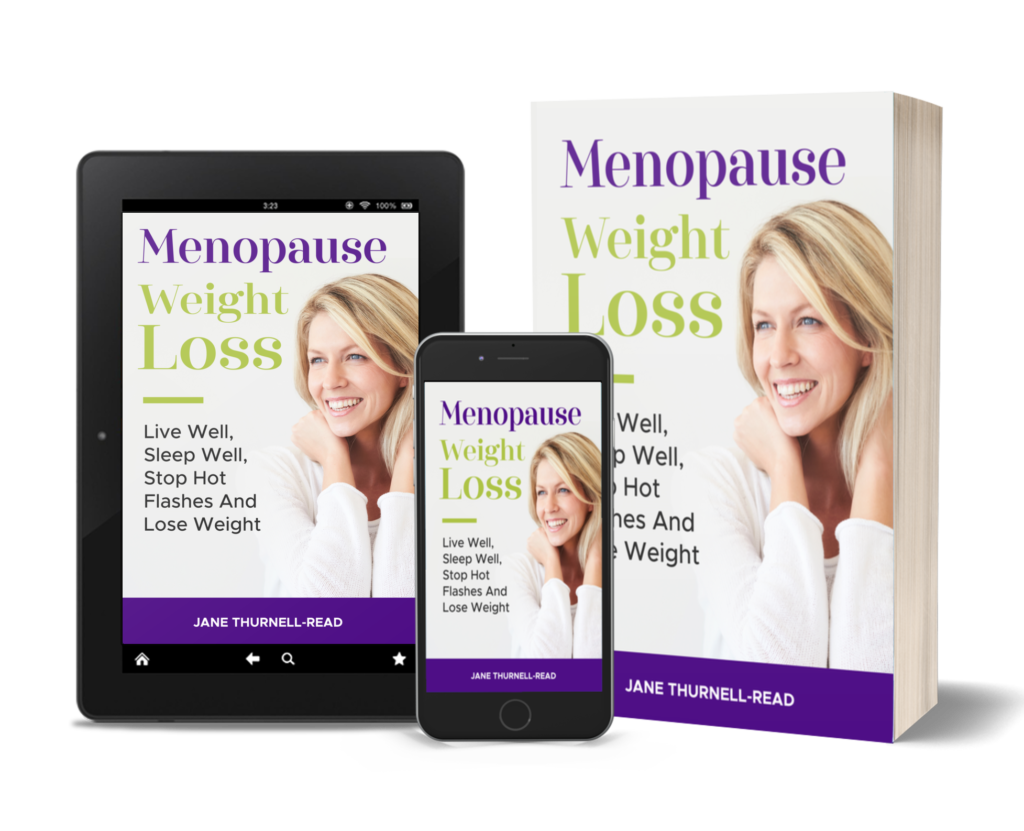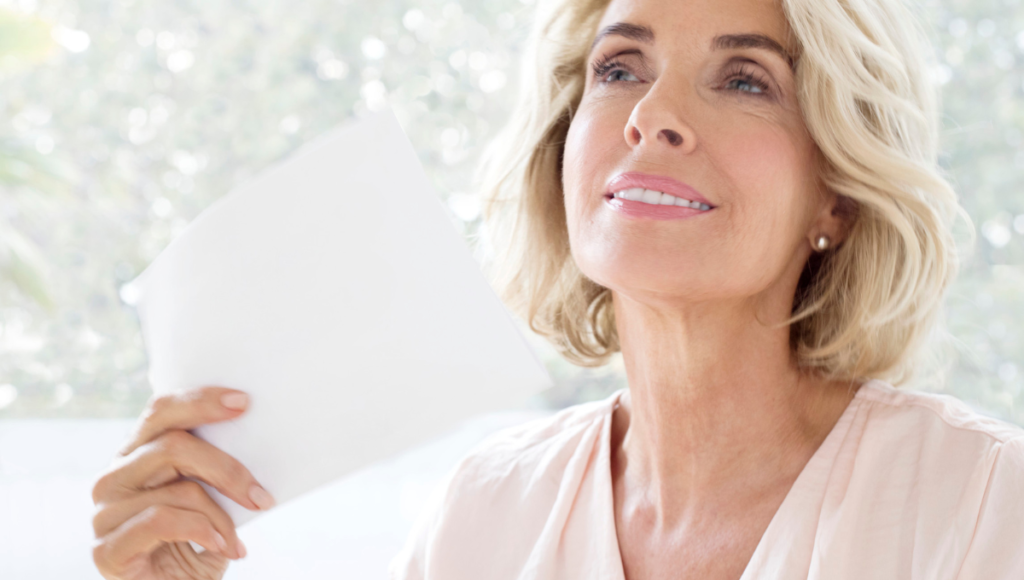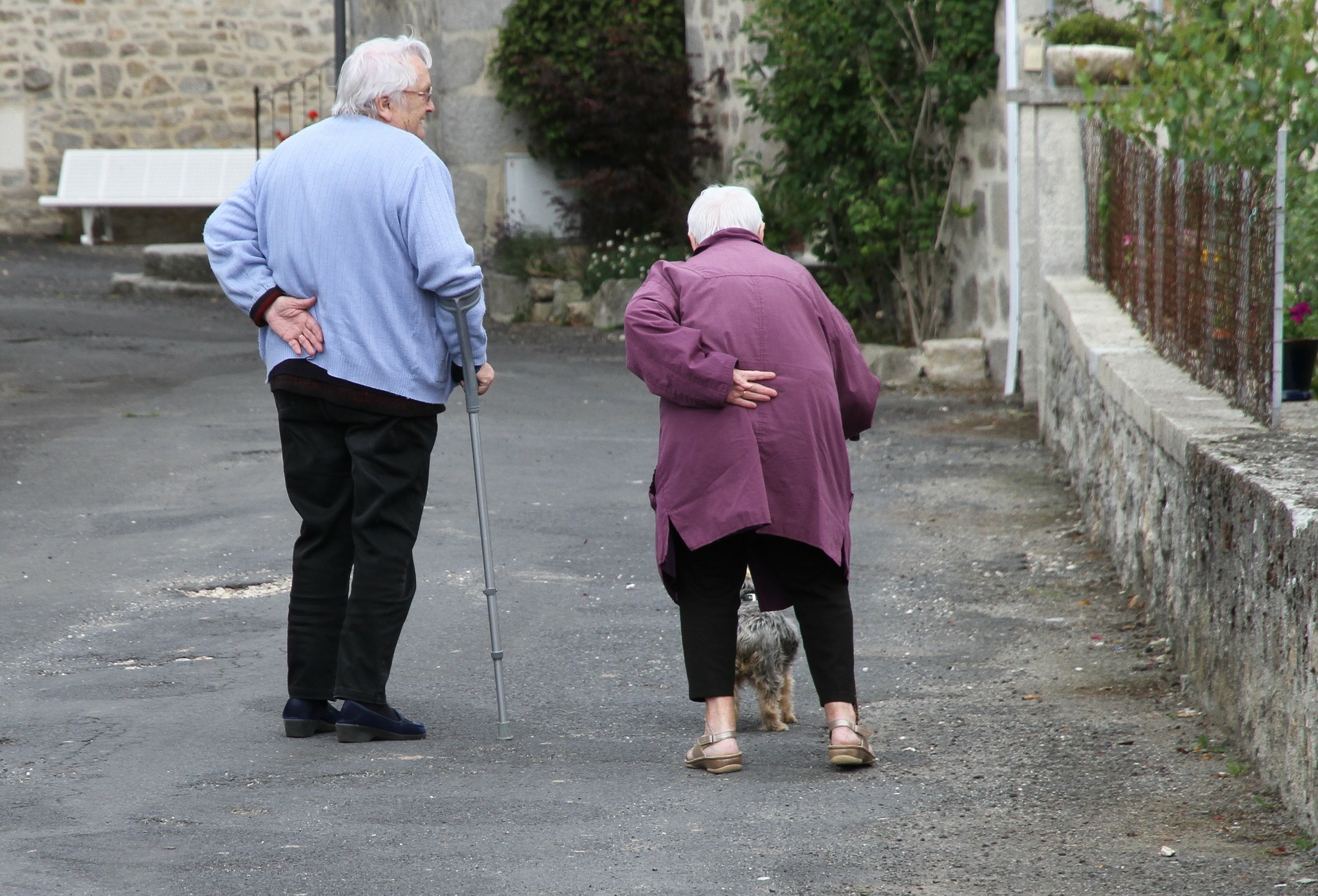As women transition from perimenopause to post-menopause the production of oestrogen reduces dramatically. Reduction in oestrogen has an effect on muscles and leads to a decline in muscle mass. Reduction in muscle mass means you are less strong. This can really affect your confidence. This can lead to fragility and anxiety, which often means older women want to stay close to home because of a fear of falling. A reduction in muscle mass also means that your posture is likely to get worse, possibly making you seem older than you are. It also means you are more prone to injury.
A reduction in muscle mass also means you are likely to gain weight. The body uses more calories to maintain muscle than it does fat. If you have less muscle mass, you will need fewer calories, even when you are doing nothing. But most people don’t make that reduction. So, they gradually put on weight. Exercise also tones your body, so that you look better.

Check out my menopause book.
Paperback and eBook on Amazon.
Audiobook on Amazon, Audible and iTunes.
Fortunately, physical activity in all of its forms may help maintain muscle mass in midlife.
A study of over a thousand women between the ages of 47 and 55 found that physical activity was positively associated with the maintenance of muscle mass during the menopausal transition. Women who were more active had higher muscle mass before and after menopause compared to the less active women. It seems that even though menopause alone decreases muscle mass, staying physically active throughout middle age can help women to slow the change.
And remember that muscle at rest weighs more than fat at rest. Even a slight increase in muscle mass will mean that your body will need more calories to maintain itself even when you are watching a film or fast asleep in bed.
Many women are fearful of becoming too muscular. This is not a problem for most young women and is certainly not a problem for women in their forties and older. Retaining muscle mass means:
- Your posture will be better. Better posture makes you look younger and appear to be less overweight
- You’ll be stronger. You’ll be more able to do your normal daily tasks without tiring.
- You’ll build confidence. Being stronger gives women confidence. You become less afraid of getting into situations they can’t handle.
- Your body will be more toned, so your clothes will fit better.
- You will be less likely to injure yourself or suffer from aches and pains.
What Exercise Should I Do?
The bottom line is that you should probably do more than you are doing now. Just get started. Try to find something you enjoy, but you also need to see some progress. You will only see progress if you put effort into it. Sadly, many women see exercise as mainly a social event, and a chance to eat cake without feeling guilty!
If you see exercise as a social event, you are likely to be so busy talking that you won’t be concentrating on the workout you are supposed to be doing. This means that you won’t be working out hard enough. If you’re not working out hard enough, you won’t see any improvement. If you don’t see any improvement, you might as well cut out the exercise and move straight to the cake!
Janet Viljoen, a research fellow in physical activity and health at Rhodes University (South Africa) looked at the benefits of strength training for a group of women aged 55 to 65.
The women exercised in small groups with a personal trainer for two months. They did exercises that targeted their upper bodies, torsos and legs for 30 minutes, five times a week. The programme got progressively harder as the women progressed.
The results were extremely encouraging. The women built up strength in both their upper and lower bodies. They were also more confident and happier. For many women increasing confidence around this time is a huge bonus. In general, they didn’t lose any weight, but that wasn’t the purpose of the study.
The women also found improvements in their everyday lives – climbing stairs, getting up and down from the floor and playing with grandchildren were all easier because of the strength training. They also had less knee and hip pain.
She concludes her article with:
“The good news is that strength training can have tangible outcomes. Many women give up on less intense exercise programmes, like walking, because they feel there is no benefit. Now they know they have an alternative.”
Yoga for the menopause
Yoga has been shown to be beneficial for weight management for people of all ages (see Hack 129 in my book “190 Weight Loss Hacks: What The Evidence Says”). In particular, it seems to encourage regular yoga participants to follow a healthier lifestyle. Many participants value the sense of friendship in their yoga group, so this could be a good strategy for you if you feel short of good friends. But there is more specific research showing that it is beneficial for menopausal women too.
Márcia P. Jorge and colleagues published an article in Complementary Therapies in Medicine, looking at the benefits of hatha yoga for menopausal symptoms. 88 postmenopausal women volunteered for this 12-week trial. They were randomly assigned to one of three groups: control (no intervention), exercise, and yoga.
After 12 weeks those practising yoga had statistically lower scores for menopausal symptoms, stress levels and depression symptoms, as well as significantly higher scores in quality of life when compared to control and exercise groups.
Another study of integral yoga found that women in the yoga group reported a decrease of approximately 66% in hot flash frequency.
All this suggests it is well worth trying yoga. Many women find it enjoyable for its own sake and some find a community of like-minded women for support and friendship.
The National Institute of Health (USA) says:
“There’s … evidence that yoga may be helpful for some medical conditions. Yoga may help lessen pain and menopause symptoms.”
Dance away the menopause
If you have a lingering hatred of sport and exercise from your school days, what about trying dance? When you think about exercising, you may not think about dance.
A study published in Menopause, the journal of The North American Menopause Society found that a dance class three times a week improved not only fitness and metabolic profile but also self-image and self-esteem in postmenopausal women.
Are you reluctant to exercise because of backache? Check out my blog on the medical advice about this.
If you’ve had cancer and think exercise might not be a good idea, check out my blog on that.


